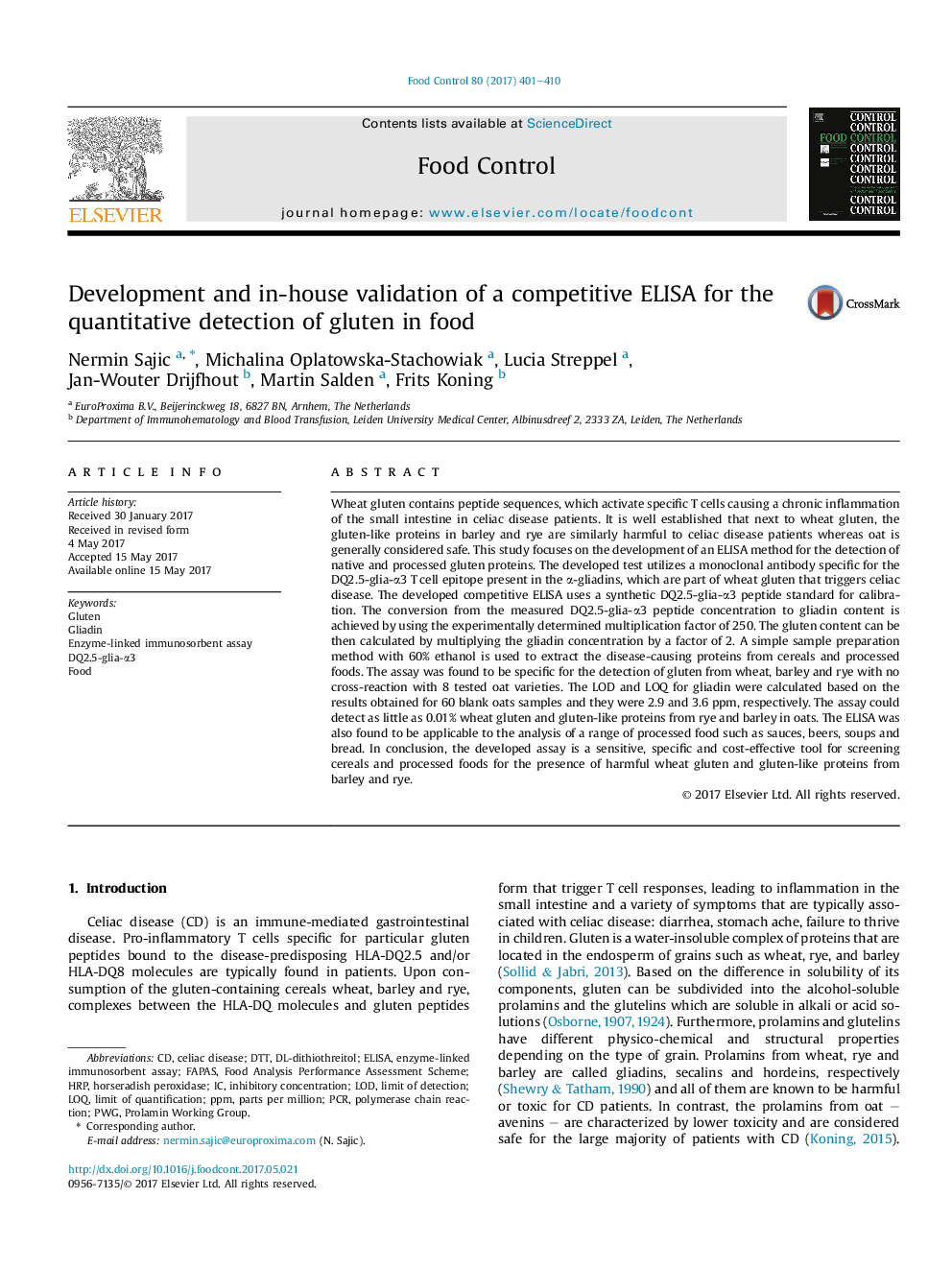| کد مقاله | کد نشریه | سال انتشار | مقاله انگلیسی | نسخه تمام متن |
|---|---|---|---|---|
| 5767269 | 1628384 | 2017 | 10 صفحه PDF | دانلود رایگان |

- A new ELISA method for the detection of gluten in food was developed and validated.
- The method is based on an antibody specific to DQ2.5-glia-α3 peptide in α-gliadins.
- A synthetic DQ2.5-glia-α3 peptide standard is used for calibration.
- The antibody used in the test does not cross-react with oats.
- The assay is specific for the detection of gluten from wheat, rye and barley.
Wheat gluten contains peptide sequences, which activate specific T cells causing a chronic inflammation of the small intestine in celiac disease patients. It is well established that next to wheat gluten, the gluten-like proteins in barley and rye are similarly harmful to celiac disease patients whereas oat is generally considered safe. This study focuses on the development of an ELISA method for the detection of native and processed gluten proteins. The developed test utilizes a monoclonal antibody specific for the DQ2.5-glia-α3 T cell epitope present in the α-gliadins, which are part of wheat gluten that triggers celiac disease. The developed competitive ELISA uses a synthetic DQ2.5-glia-α3 peptide standard for calibration. The conversion from the measured DQ2.5-glia-α3 peptide concentration to gliadin content is achieved by using the experimentally determined multiplication factor of 250. The gluten content can be then calculated by multiplying the gliadin concentration by a factor of 2. A simple sample preparation method with 60% ethanol is used to extract the disease-causing proteins from cereals and processed foods. The assay was found to be specific for the detection of gluten from wheat, barley and rye with no cross-reaction with 8 tested oat varieties. The LOD and LOQ for gliadin were calculated based on the results obtained for 60 blank oats samples and they were 2.9 and 3.6 ppm, respectively. The assay could detect as little as 0.01% wheat gluten and gluten-like proteins from rye and barley in oats. The ELISA was also found to be applicable to the analysis of a range of processed food such as sauces, beers, soups and bread. In conclusion, the developed assay is a sensitive, specific and cost-effective tool for screening cereals and processed foods for the presence of harmful wheat gluten and gluten-like proteins from barley and rye.
159
Journal: Food Control - Volume 80, October 2017, Pages 401-410